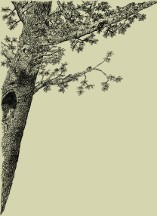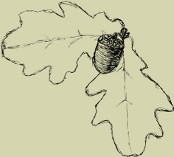42 41 40 39 38 37 36 35 34 33 32 31 30 29 28 27 26 25 24 23 22 21 20 19 18 17 16 15 14 13 12 11 10 9 8 7 6 5 4 3 2 1
Zeszyt 16 (1985)
In the presented paper, the dielectric properties of ovendry beech wood were studied over the temperature range from 100 K to 450 K at frequencies of 0.42, 2 and 10 kHz. Two dielectric relaxation processes in high and low temperature ranges were observed. The maximum values of dielectric loss factor for frequency of 0.42 kHz were localized at temperatures of 500 K and 200 K for α- and β-relaxation processes respectively. The values for activation enthalpy and entropy of β-relaxation process were calculated.
The investigation were performed on birch and aspen wood. The wood was modified by means of alkylresorein resins. Microphotographies done on electron scanning microscope have proved, that investigated resins have good ability to penetrate into all components of anatomical structure of wood. One confirm, that in free spaces in wood the polymer is formed in shape of thin film adhering to cell walls.
The vessels are filled with ball-shaped polymer particles of different diameters. The penetration of DFK resins into cell walls was observed. After the curing there arise micro-cracs in cell walls as the result of this penetrating. Therefore the strength against dynamic loadings is lowe red.
In the research work, some of properties of middle density fiberboards, produced on laboratory scale with the addition of formaldehyde, have been investigated. The formaldehyde was taken from two resources: formalin and paraformaldehyde. The properties of these fiberboards were compared with the fiberboards made without the formaldehyde content. Basing on the results it can be found, that the addition of formaldehyde causes the strength and water resistance properties of fiberboards to grow. Moreover the use of paraformaldehyde is more successful than formalin.
An intentionally performed heteroheneous degradation of cellulose (beech sulphate and spruce sulphite pulps) under calcium hypochlorite treatment was investigated using the kinetic equation for breaking of bonds in heterogenous acid hydrolysis. The determined rate constants of the reaction at temperatures: 30, 40, 50°C for sulphate pulp and 40, 45, 50°C for sulphite pulp respectively are: 6.8, 16.7, 22.7 and 11.2, 16.5, 21.6⋅10−8 s−1.
Activation energy for beech sulphate pulp degradation 39.4 kJ/mol is lower than that for sulphite spruce pulp — 55.2 kJ/mol.
The results of own research were compared with literature data.
The effect of the age of wood in the range from 10 to 53 years (stem diameter in the range 5-16 cm) and of the habitat on the anatomical structure, chemical composition and the morphology of fibres of pine wood was investigated. The effect of a variable characteristic of wood on its suitability for the production of kraft pulps was estimated.
It was stated that the yield of pulps from thin wood (⌀5-8 cm) is lower than that of pulps from wood of higher diameter (⌀11-16 cm). The tensile strength bursting strength and double folds number of kraft pulps produced from thin and from typical pulpwood are on the same level, however the tear index of pulps obtained from thin woods is lower by 10 to 20%.
The effect of the age of wood in the range from 13 to 50 years (diameter of stem and branches in the range 5-18 cm) and of the habitat on the anatomical structure, chemical composition and the morphology of fibres of beech wood was investigated. The effect of variable characteristic of wood on its suitability for the production of kraft pulps was estimated.
It was stated that the yield of pulps from thin stem wood (⌀7-8 cm) and branch wood (⌀5-7 cm) is similar to that of pulps from wood of higher diameter (⌀15-18 cm). The tensile and bursting strength of kraft pulps produced from thin wood and from pulpwood are on the same level. The tear index and double folds number of pulps obtained from thin wood are, however, distinctly lower. Pulps obtained from branch wood showed a tear index lower by about 20% and double folds number over two times lower as compared to pulps from typical pulpwood.















 Pobierz PDF
Pobierz PDF